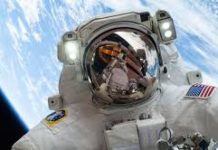NASA’s Juno mission to our solar system’s gas giant, Jupiter, is halfway through its planned mission and has just revealed stunning, new views of the planet. Included in the pictures are cyclones at the poles, detailed views of the bands of clouds, and even, the Great Red Spot.
Juno orbits the planet every 53 days and is gathering science data as it speeds from pole to pole. Part of the data Juno is gathering involves taking measurements of the composition of Jupiter in an effort to help decipher how the largest planet in our solar system actually formed billions of years ago.
Juno is also gathering data about the magnetic and gravity fields of Jupiter. By mapping Jupiter’s massive magnetic and gravity fields, NASA hopes to pierce the dense clouds that shroud Jupiter and learn more about its structure.
NASA has made the most recent images from the JunoCam available to the public. The JunoCam is a camera that captures images that NASA shares with the public. Raw images are downloaded from Juno and the pictures get processed by the public.
Dr. Candice Hansen, from the Planetary Science Institute in Arizona, leads the JunoCam project. While presenting at the American Geophysical Union meeting in Washington D.C., she shared the most recent set of photos which revealed spectacular giant cyclones at the poles. The photos have given some surprising insights, including the storms at the poles being orderly polygons about twice the size of Texas and stationary in the multiple fly-bys. Other images revealed dolphin shaped Jovian clouds ‘swimming’ across the atmosphere.
Prof. Hansen said she was “wow[ed]” by the images and called them “spectacular.” She also noted that these pictures had never been seen before.
Going beyond just being “pretty pictures,” the data and images are providing scientists important information about how the largest planet in our solar system initially formed and evolved over time. A key connection scientists are trying to make is how the interior structure of Jupiter impacts the clouds in its massive atmosphere. Jack Connerney, the Juno deputy principal investigator, said that the next part of the mission will examine what makes Jupiter “tick”.
NASA, with the public’s help, has made 21 images available, as well as a video. You can find more of these amazing Jovian images, the video and additional information on the JunoCam site here.






